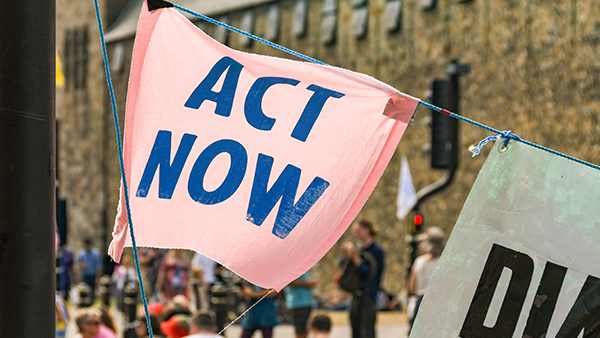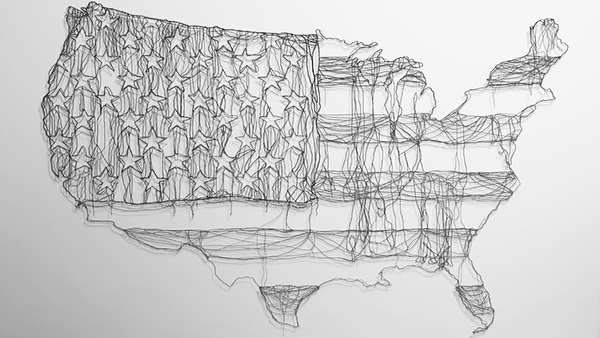This blog post is parochial, self-interested and possibly wrong. But, frankly, I don’t care.
This morning at 8.15, as is now increasingly typical, I stood in the cold with about two hundred other people waiting to get into Clapham South underground station. After about ten minutes of this I finally got through the barrier only to have to wait another ten minutes while six full northbound trains came and went.
As well as making us late for work the experience is miserable and frustrating. Although holding people at street level reduces over-crowding, packed platforms are still a danger. Similar events apparently unfold every weekday morning between 8.00 at 8.45 at several other Northern Line stations.
In the end we need long term solutions like a second Northern Line or measures to incentivise a more staggered travel to work period over two hours. But the reason for this post is that several things could be done NOW to make the situation better and it is beyond me why they are not.
Each carriage contains in its middle section eight fold down seats in four pairs. If these seats are in the seating position they accommodate just one person each but if both seats are up at least four people can stand in the room then available. So if London Underground specified that the seats were not to be pulled down during rush hour (unless needed for a disabled person or for a heavily pregnant person) they could get fifty extra people on each train (8-10 people per carriage). Apparently this convention is already observed in the Paris Metro.
London Underground could also clearly specify a set of behaviours which would increase space. Not everyone would comply, but clear requests to standing customers on crowded trains not to commandeer space in front of them for reading and to place rucksacks at floor level would, I estimate, free up about another half dozen spaces per carriage.
Finally, London Underground could also provide simple illustrations of how people can stand to minimise wasted space. For example, if people standing in the space between the seats are facing the front of the train next to each other it is possible to fit two more people into the space than if they are standing facing the platform or at an angle.
In fact, I suspect that an expert in crowd management design could probably come up with a number of suggestions that would add further space.
Overall, with small change and better guidance and advice my estimate is that easily over fifty, and possibly up to a hundred, more people could be accommodated on each train and in a way that would make the experience slightly less likely to be uncomfortable and annoying.
If I am right this would make a substantial immediate difference at virtually no cost. So, there can only be three reasons why London Underground isn’t acting:
- For reason I don’t understand my suggestions don’t work (if so I am sure someone will quickly point it out and I can delete this post without further embarrassment)
- Complacency – LU just don’t care about the problem – rush hour transport is sellers’ market so why should they bother making life easier on Londoners? I can’t believe this is true
- Embarrassment. London underground don’t want to admit the scale of the problem and face headlines about forcing beleaguered commuters to help the authorities deal with over-crowding. I suspect this may be the most likely explanation.
If ‘3’ is correct then maybe an overwhelming expression of support for my suggestions from Northern Line users would change LU’s corporate mind.
Over to you fellow sufferers.
Related articles
-
The public are ready to go further and faster on net zero
Anthony Painter
The public are ahead of policy-makers and, indeed, most of the business world. COP26 is an enormous opportunity to catch up. Global leaders should take it.
-
Can progressives ever stop the in-fighting?
Matthew Taylor
Biden's victory has caused the left and moderates to fracture again.
-
Can President Biden bring America together again?
Anthony Painter
There is a long road ahead for the new president.




Join the discussion
Comments
Please login to post a comment or reply
Don't have an account? Click here to register.
Matthew
On the line I use most frequently, the Central Line, Inotice sometimes these public education ads, from TFL, which run something likethis: 'We don't mean to chide, but do pay attention to others and take up allthe available space'. I guess from the defensive tone of the introduction thatembarrassment might be an issue. Telling people what to do in grey areas ofbehaviour like this can backfire, if it's felt to be too directive orintrusive.
Are these ads effective? From what I see, crowding at thedoors is still quite common (and annoying), especially at peak times. It worksslightly better when drivers ask commuters to move away from doors so they canclose properly, otherwise the train won’t start. Drivers are usually cool,but even so, they don’t sound too happy about having to do this.
However, if enough people get frustrated about having towait 20 minutes in the cold to board a train, perhaps squeamishness might be putaside and TFL might think about enforcing rules about the use of fold downseats and so on.
Perhaps they could also schedule additional trains to startjust before or stop only at the bottleneck stations? Might this be theopportunity to test/introduce fancy sensors and advanced technology to giveprecious, of-the-minute passenger flow input for models informing decisionsabout the best deployment of trains?
Conceivably the RSA could invite some TFL leaders to explainwhat exactly they are up to with all these modernisation programs they say theyare running at the moment. All that wifi at stations - what is it for?
"measures to incentivise a more staggered travel to work"
I'm sorry, but for many, avoiding the experiences you describe is incentive enough to start work earlier. And if you're looking for a place to live, avoid the NL catchment.
Something else to consider is having a more enlightened approach to work hours. There's no real reason why work has to take place between 9-5, or indeed that work has to take place in an office. The crush during rush hour is a symptom of these wider problems.
Nice one Adi - of course!
Hi Matthew - the experience doesn't sound like a lot of fun. I don't use the service and I've been aware of the overcrowding problem, for some time. TfL has previously advised people not to board the service in rush hour between Tooting Bec and Clapham North because it's too busy (see link below) - so I'm not sure your point number 3 is completely accurate.
http://www.itv.com/news/london/update/2013-11-11/tfl-avoid-the-northern-line-its-too-busy/
How practical are the alternatives - buses, walking, cycling? If you and others are enduring 20 minute delays just to board a train, maybe there's another way?
Cheers - Doug